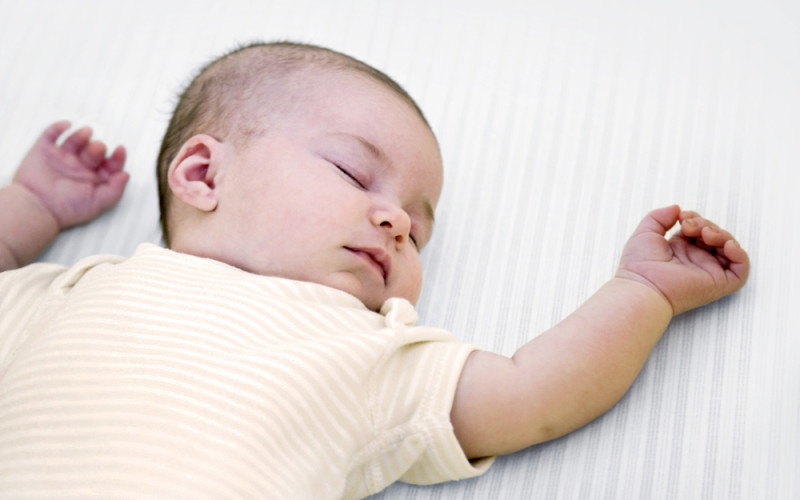SIDS and your sleeping baby

Young babies spend the majority of their day sleeping. With so many hours spent asleep, it’s important that your baby is sleeping safely. Sleeping safely reduces your baby’s chance of Sudden Infant Death Syndrome (SIDS) and other sleep-related infant deaths (such as suffocation). Thankfully, fewer babies are dying of SIDS since doctors started recommending babies sleep on their backs, about 20 years ago. But unfortunately, SIDS is still the leading cause of death for infants between the age of 1 month and 12 months.
The American Academy of Pediatrics gives advice about infant sleep, based on the latest research. By following these helpful tips, you will help protect your baby from the tragedy of sleep-related death:
- Always place your baby on his back when sleeping. The back is by far the safest position for a baby to sleep. Both side sleeping and belly sleeping are more dangerous sleep positions, with higher risks of death.
- Your newborn should have his own sleep space. Appropriate places for a baby to sleep are a bassinet, crib or portable crib (also known as a play yard).
- Use infant sleep clothing instead of blankets. Sleep clothing may also be called sleep sacks or wearable blankets. Use sleep clothing that keeps your baby warm without the possibility of covering his head. Blankets are more likely to become loose and cover your baby’s face, which can interfere with breathing.
- Never sleep with your newborn in a bed or on a couch. It’s natural and healthy to bond with your baby by holding him and keeping him close to you. However, when you are tired or ready to sleep, it’s time to put the baby in his own safe space. Devices designed to make bed-sharing “safe” should not be used. Bed sharing is especially dangerous if the baby is sleeping with someone under the influence of alcohol or drugs, or if the baby is sleeping with someone other than a parent (such as a sibling).
- Avoid overheating the baby. Overheating increases the chance your baby may stop breathing. Your baby should have at most one more layer than you would wear to feel comfortable; avoid over-bundling. Keep your thermostat at a reasonable temperature (for example, 68 to 72 degrees Fahrenheit). Your baby will also stay cooler if he sleeps on his back. Signs of overheating are if he is sweaty or feels hot to the touch.
- Consider offering your baby a pacifier when you place him to sleep. Some young babies do not take the pacifier easily. That’s OK; just try again in a few more days. If the pacifier falls out, no need to disturb his sleep to reinsert it. With breastfeeding, you should wait until your baby is three to four weeks old so that you have a good supply of milk before offering the pacifier.
- Your baby should not routinely sleep in a seated position, such as in a car safety seat, swing or stroller. Young babies are more likely to slide down in the seat, which can make it difficult to breathe.
- Remember to share your safe sleeping tips when someone else is watching your baby.
There are also important things to remember about where you place your baby’s crib, what’s around the crib and what (or what doesn’t) go in the crib.
- Position your baby’s crib in the same room where you are sleeping. You will be more in tune to breathing patterns and more likely to know if he is having trouble while sleeping. Room sharing can cut the risk of SIDS by half. (Don’t forget — room sharing is different than bed sharing, which is not recommended.)
- Use a firm mattress, and cover it with a tight-fitted sheet.
- Never use comforters or thick blankets. Do not place these over or under the baby, or use them to wrap the baby.
- Never put pillows, cushions, toys or other things in the crib, including bumper pads. Tragically, bumper pads have actually caused death in infants by suffocation and strangulation. And bumper pads do not protect against any type of serious injury. Positioning devices (also called “wedges”) sold to “protect against SIDS” are not recommended by pediatricians.
- Make sure the baby’s crib is not near any dangling cords or wires. Cords from nearby blinds, for example, can pose quite a danger.
Author Laura Lawler, M.D., FAAP, is chief of Pediatric Hospitalists at Christiana Care.
